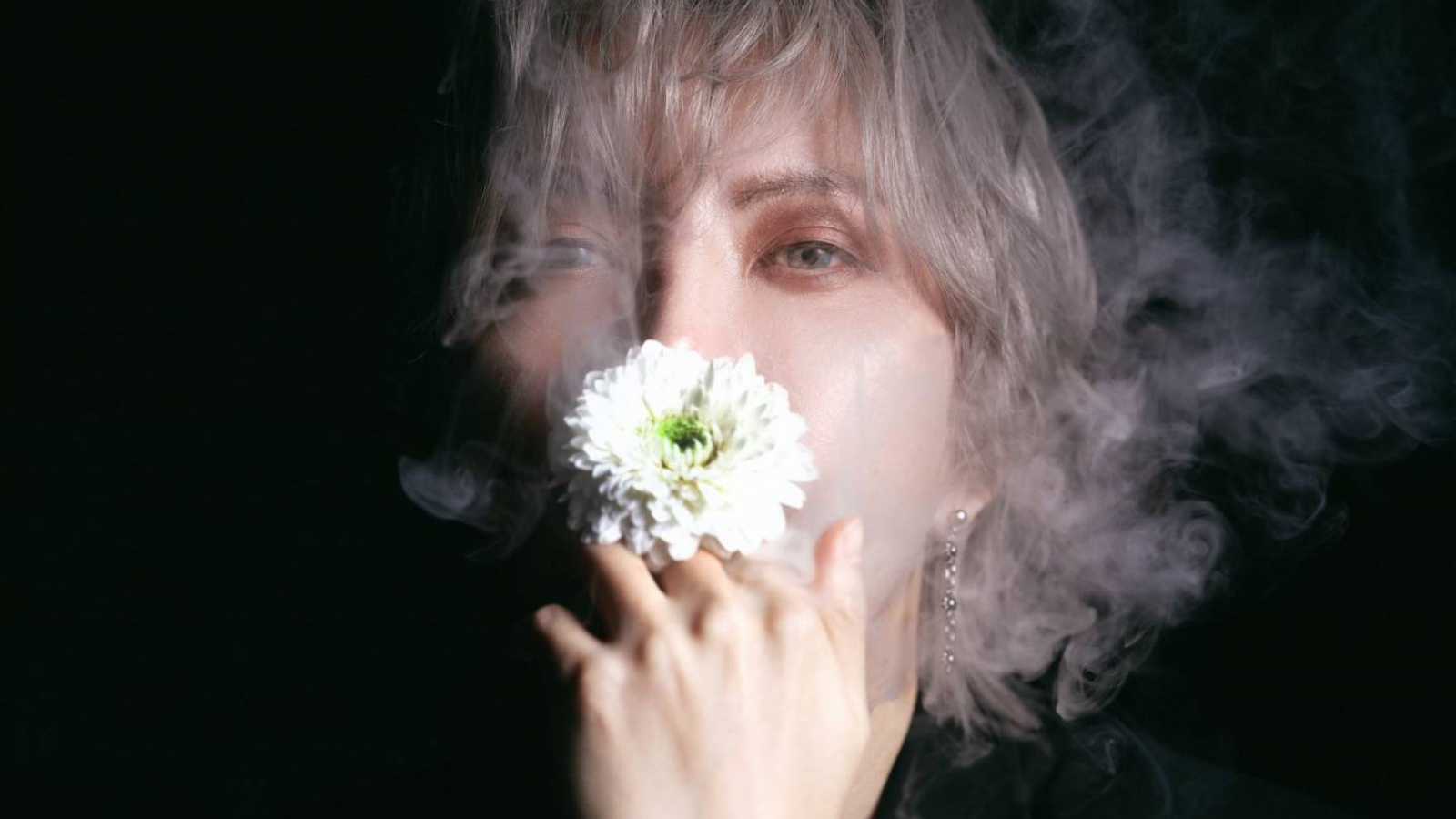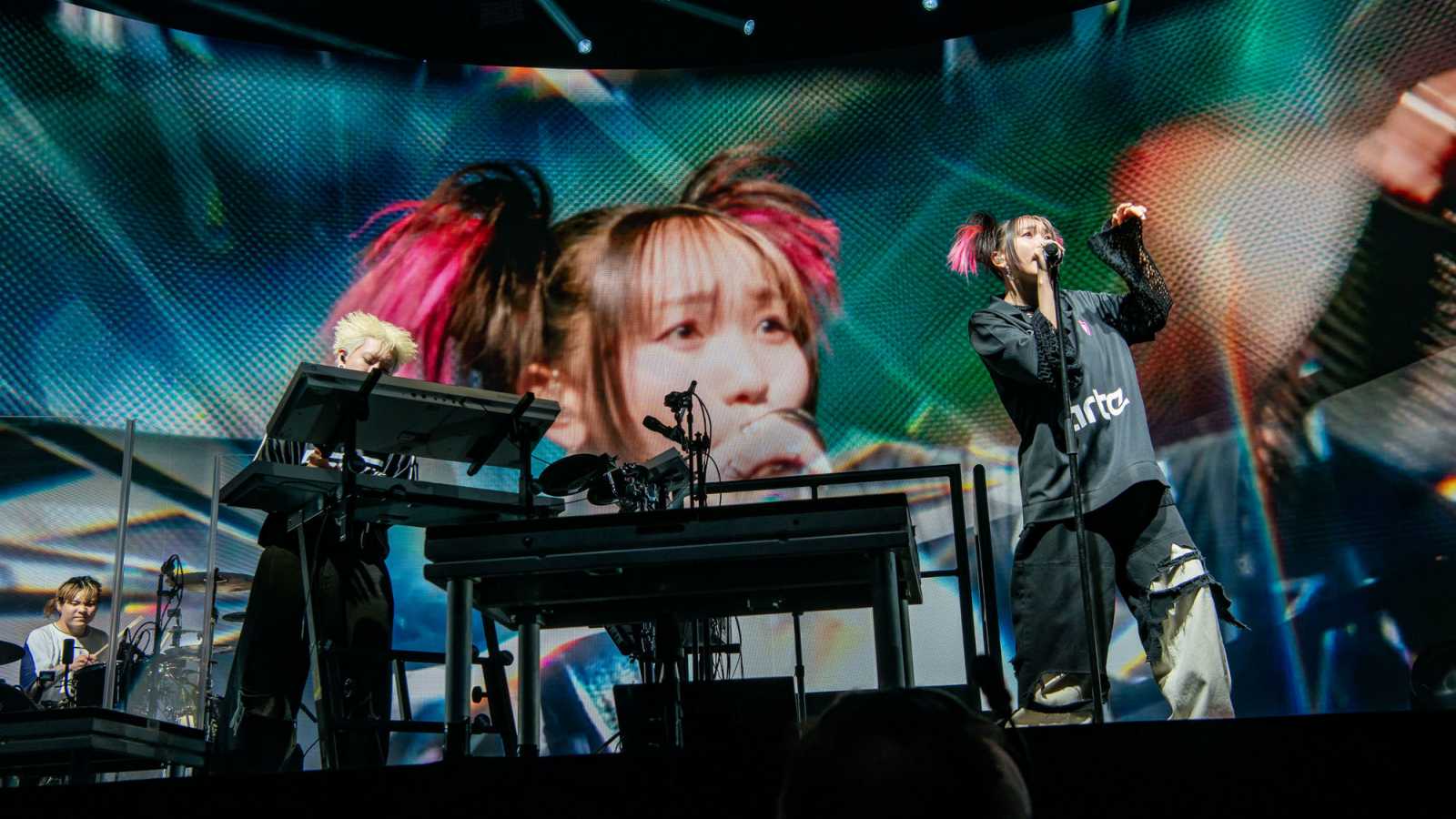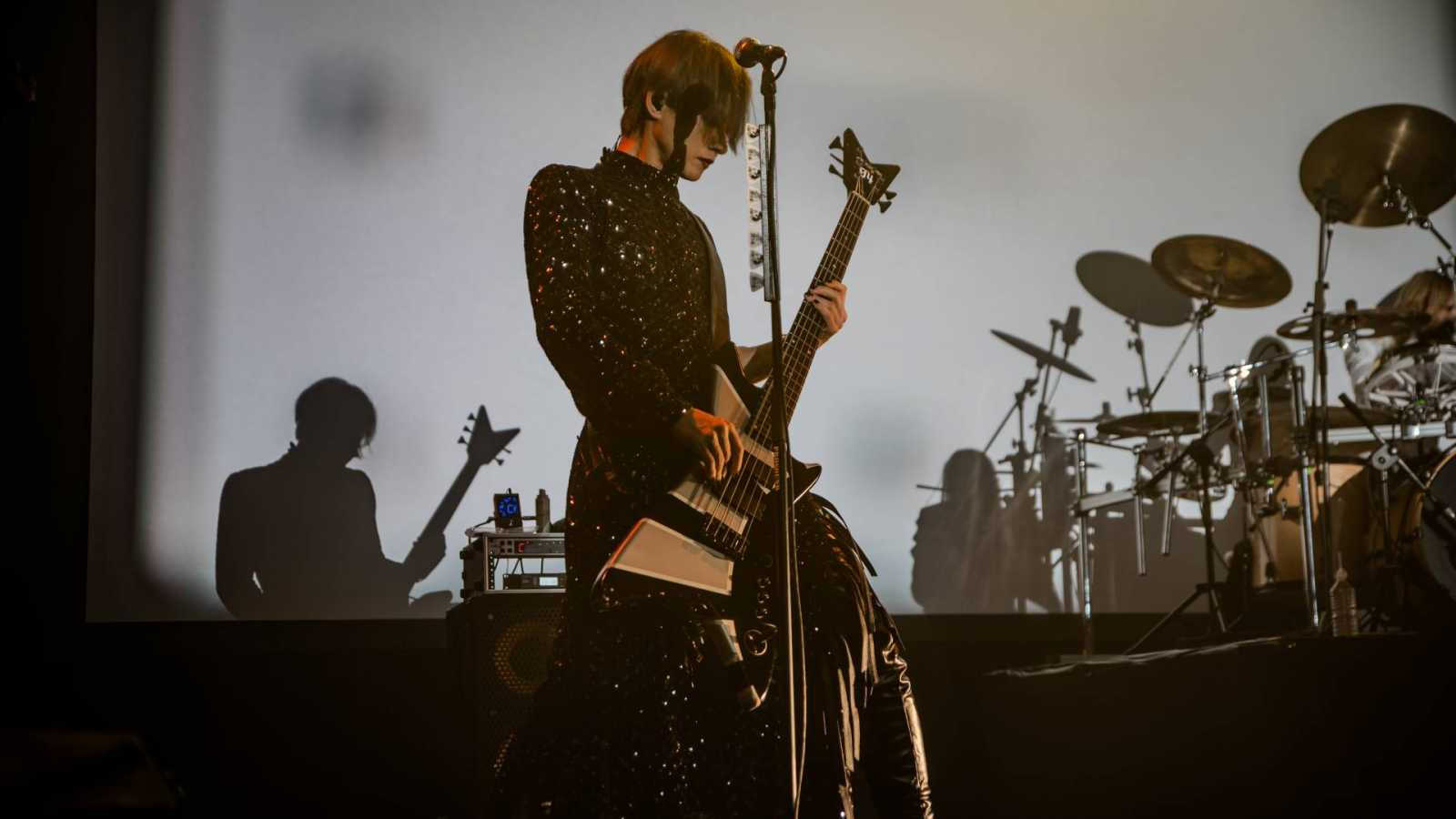Concert footage from LOVE IS BORN~3rd Anniversary 2006~ shows the celebration of Otsuka Ai's 24th birthday.
Several short video clips of fans wishing Otsuka Ai a “happy birthday” in Japanese herald the start of the concert DVD. Performed on September 9, 2006 at Hibiya Yagai Ongaku-do, the DVD performance celebrates both Otsuka A’s 24th birthday and the 3rd ‘anniversary’ since her debut.
The first track, Yumekui, opens with a dark stage. Otsuka Ai starts singing the moment she first steps on stage and as soon as she hits the first verse, the stage is illuminated, with most of the detail given to the guitarists and drummer during instrumental parts of the song. Short cuts to her movement onstage show very serious expressions on her face. The colours are warm and inviting and match well with each other: her red nail polish even matches with the red stage lighting. The cuts between each part are nice; it keeps the performance fresh and is not stuck on one thing but also draws attention to the work put into it. At the end of Yumekui, she thanks the audience before slipping into the next song, GIRLY.
Her voice in GIRLY is more nasal, but her bouncier movements are fun to watch. It brings a sense of happiness and a bit of youth to the viewer at home, and seeing her bright smile on screen makes you want to get up and dance along with her as the stage lights turn red during the instrumental parts with the saxophone and guitar. As soon as the audience finishes applauding, the song ends in a jazzy manner before the stage turns pitch black - leaving the viewer to wonder how time has passed so quickly!
During a quick break from the performance, Otsuka Ai asks how the audience is feeling and talks for a bit before singing the ballad Amairo parasol, which has a similar sort of a jazz feeling. The lighting pretty much stays in a primary colour range as she sways around.
As if she were telling a story during the peach-pink lit Momo no Hanabira, the added shamisen helps give the tale a nice feeling. Seeing shots of the drummer smiling makes you want to smile too. Intervals of blue strobe lights run over both the audience and her, giving the impression of a romantic twilight sky. The use of shamisen is unexpected, but as the song continues on, it is incredibly mesmerizing and lingers in the mind. Viewers will find themselves waiting in anticipation for more scenes of the shamisen player.
Haneari tamago is a song of gentle proportions: as soon as Ai sits down at the piano, it is just her on stage. The slow tempo is expected for the pleasant ballad, but once the piano is illuminated on stage, the viewer is drawn in. Haneari tamago is a pretty ballad; it shows her range but isn’t overpowering. The lighting chills to a faded blue and a gentle mauve to match the serenity of the song. The next track is also piano based, so Ai stays seated.
Fans of Otsuka Ai and the Japanese drama version of Hana Yori Dango alike will shiver at the familiar chords of Planetarium. Set at a slower tempo, the blue light washes over her, but changes when it cuts to the open night sky that is dusted orange. It’s intriguing to hear this track live, and it’s equally nice for it to be her voice and piano and nothing else. As the song is transposed up a key, her silhouette becomes more defined. The piano chords at the end of Planetarium helps the song slip smartly into the next.
The intro to Kingyo hanabi is much like Planetarium, except it combines traditional instruments with western instruments. The poetic concept of hanabi is found scattered through the lyrics in this track, too. When the camera zooms out to a long shot, the viewer can see a few shamisen players in front of a row of violinists near the back of the stage. The song itself is gentle, and the sweeping camera seems to capture the emotion of each player in the background as well as of Otsuka Ai herself. The best bit is at end when the song briefly becomes a rock song. It speeds up briefly before calming back down to a gentle stream of sound. A light flickers over Ai's body as the song dies down to silence.
Fireworks are set off at the beginning of Kataomoi Dial, and as confetti falls over the crowds, Otsuka Ai happily dances around the stage. Kataomoi Dial is a bright and bubbly track, making it fun to watch. LOVE IS BORN 3rd anniversary ends with the energy pumped track Sakuranbo. Ai runs around on stage, waving her arms and shaking her body to the music, and even though she seems tired, she is still having fun. Afterwards, the audience cheers, calling her name for an encore. A bit of a wait follows - almost four minutes - and then she returns onstage for a chat with the audience. She performs three additional tracks before leaving for good.
Overall, seeing the performance on DVD and in the comfort of one’s home is a nice but surreal experience. The price might not be everyone’s cup of tea, despite the charming accompanying photo book, but it is a great collector’s item for those who enjoy concert DVDs and of course, Otsuka Ai.



